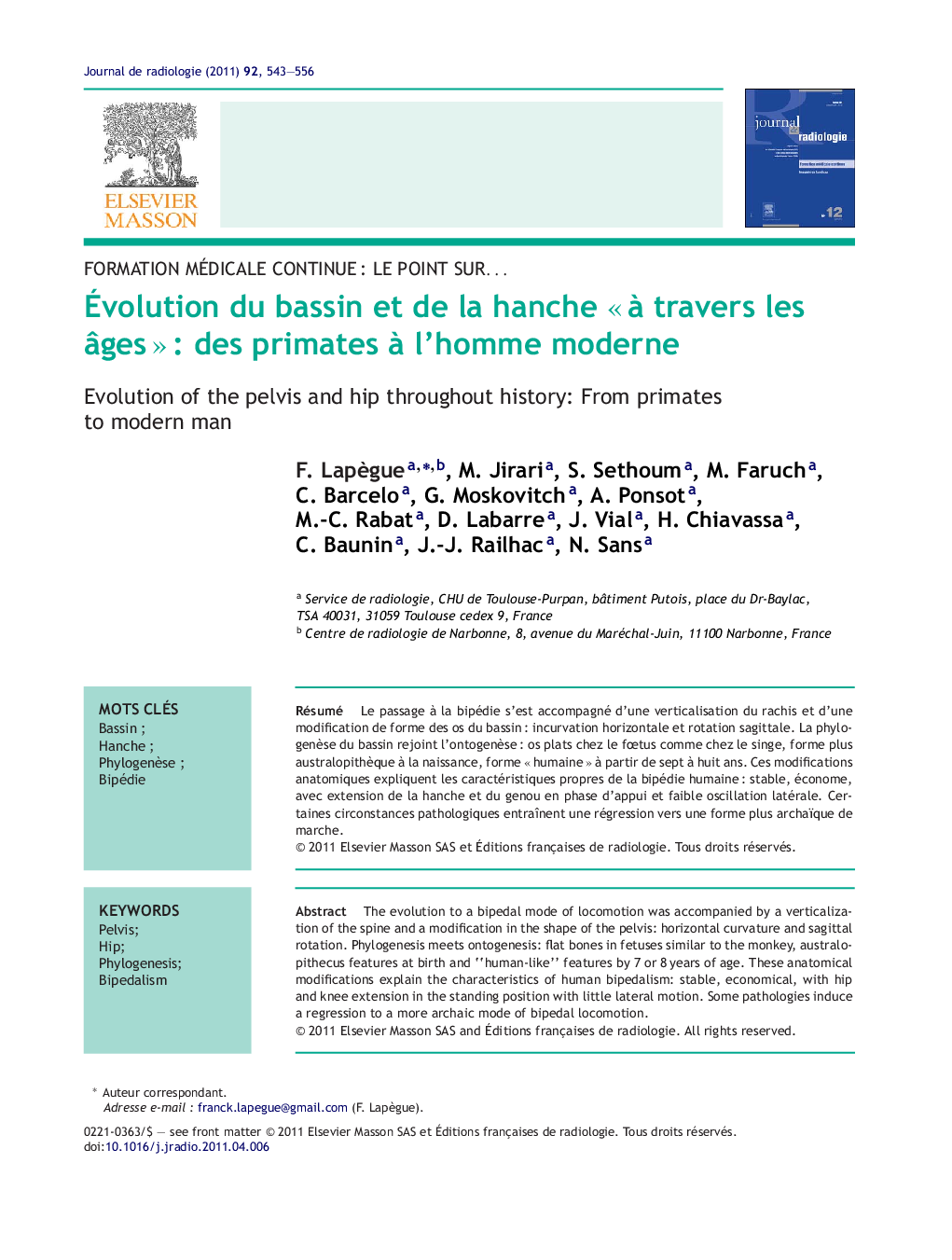| Article ID | Journal | Published Year | Pages | File Type |
|---|---|---|---|---|
| 4234911 | Journal de Radiologie | 2011 | 14 Pages |
Abstract
The evolution to a bipedal mode of locomotion was accompanied by a verticalization of the spine and a modification in the shape of the pelvis: horizontal curvature and sagittal rotation. Phylogenesis meets ontogenesis: flat bones in fetuses similar to the monkey, australopithecus features at birth and “human-like” features by 7 or 8Â years of age. These anatomical modifications explain the characteristics of human bipedalism: stable, economical, with hip and knee extension in the standing position with little lateral motion. Some pathologies induce a regression to a more archaic mode of bipedal locomotion.
Related Topics
Health Sciences
Medicine and Dentistry
Radiology and Imaging
Authors
F. Lapègue, M. Jirari, S. Sethoum, M. Faruch, C. Barcelo, G. Moskovitch, A. Ponsot, M.-C. Rabat, D. Labarre, J. Vial, H. Chiavassa, C. Baunin, J.-J. Railhac, N. Sans,
